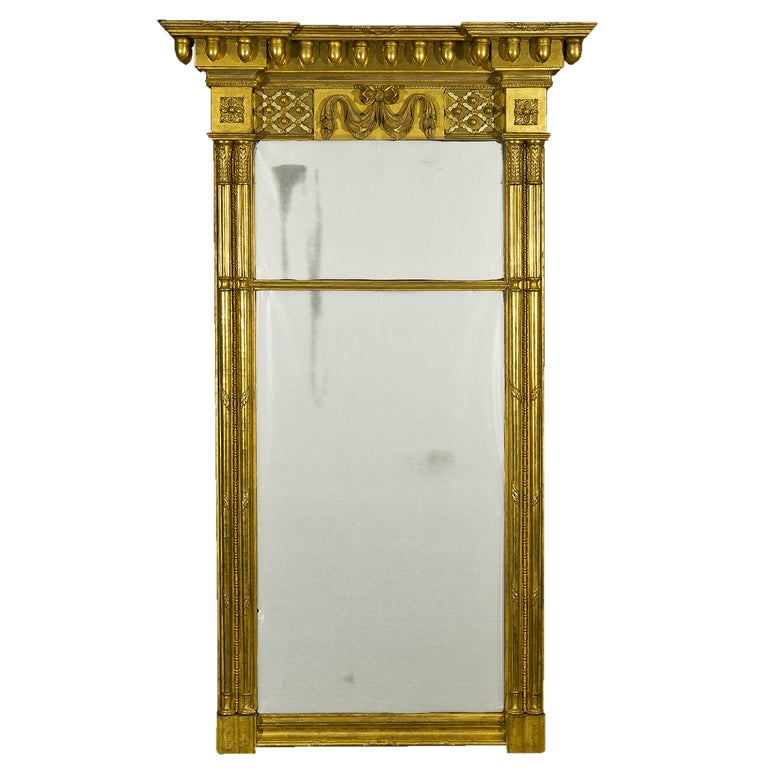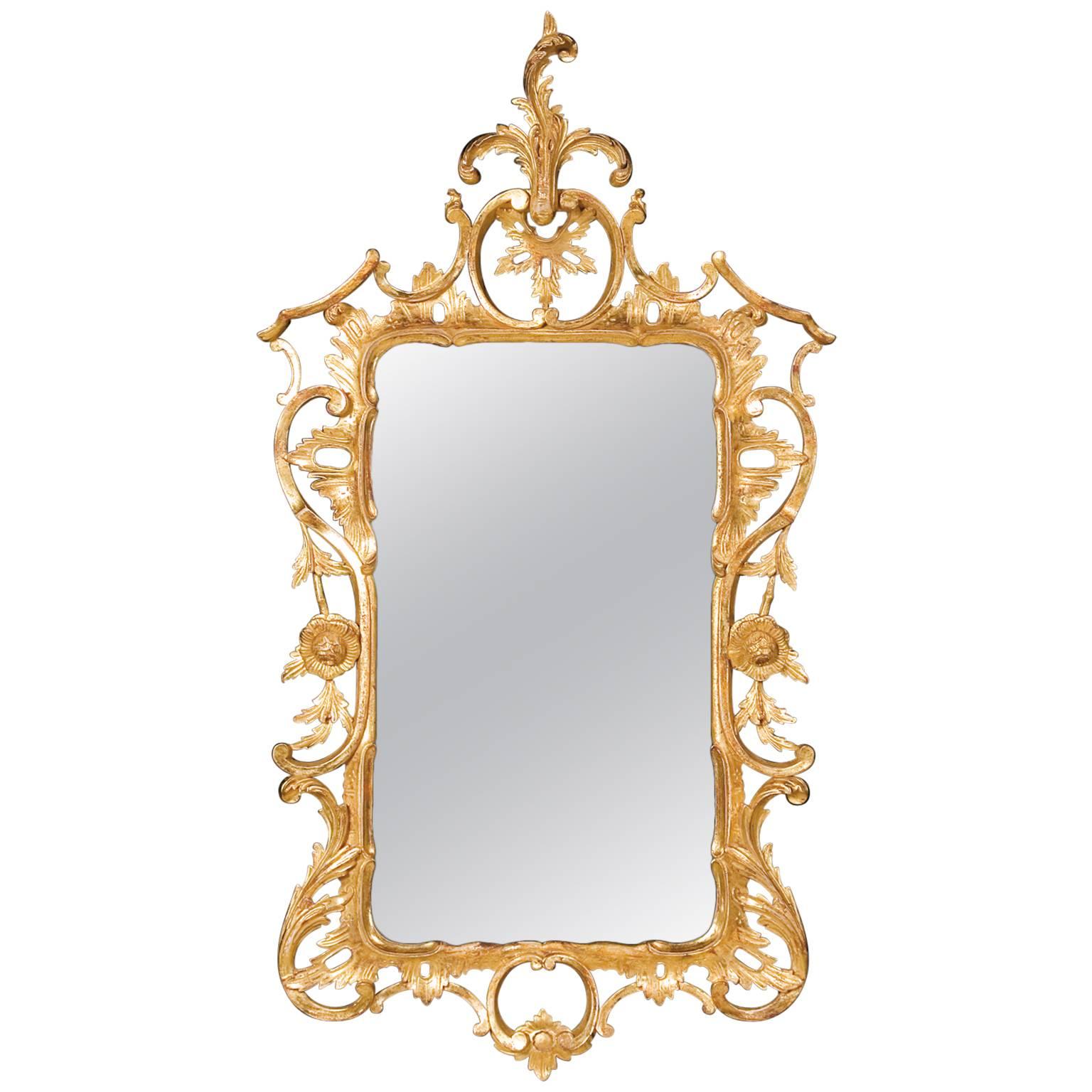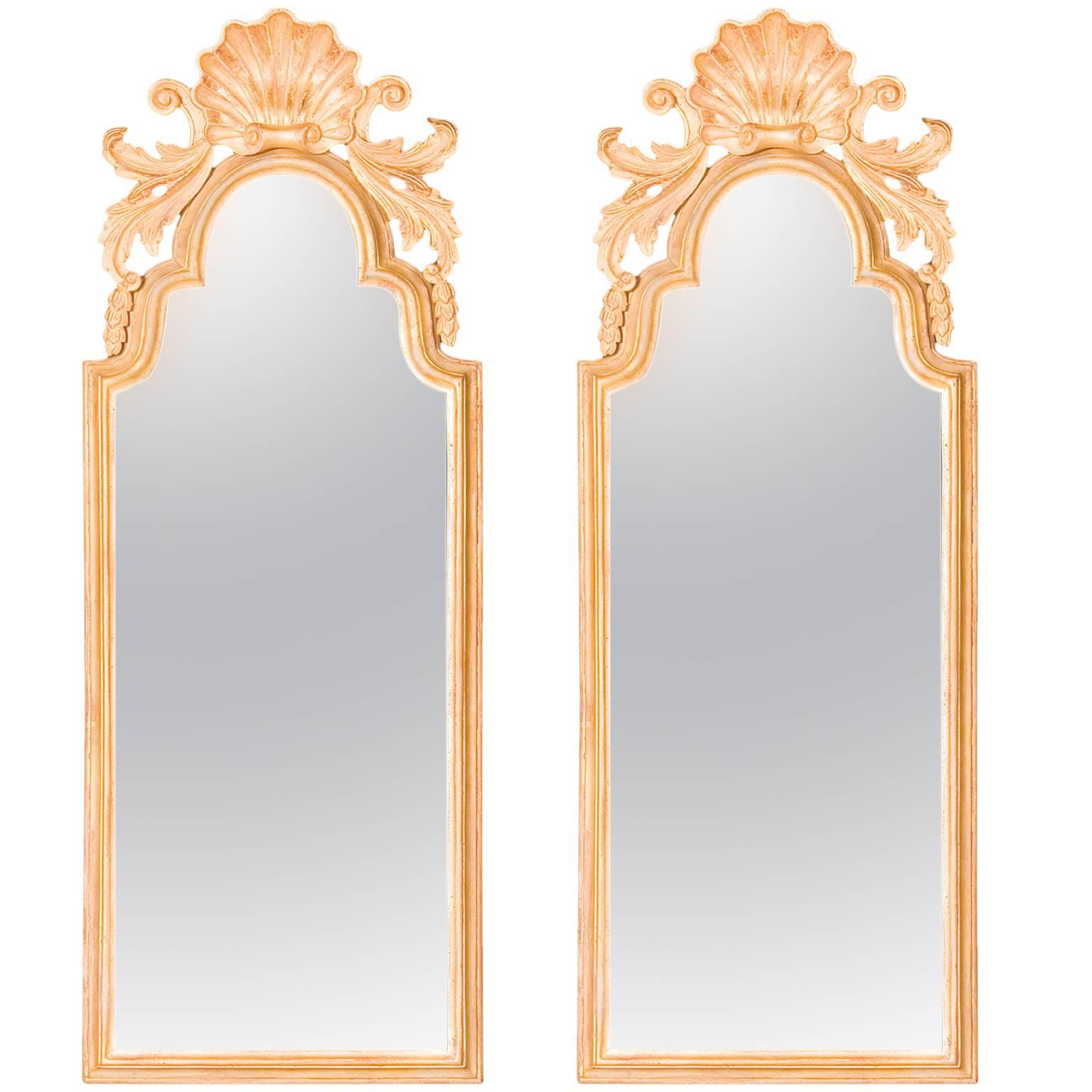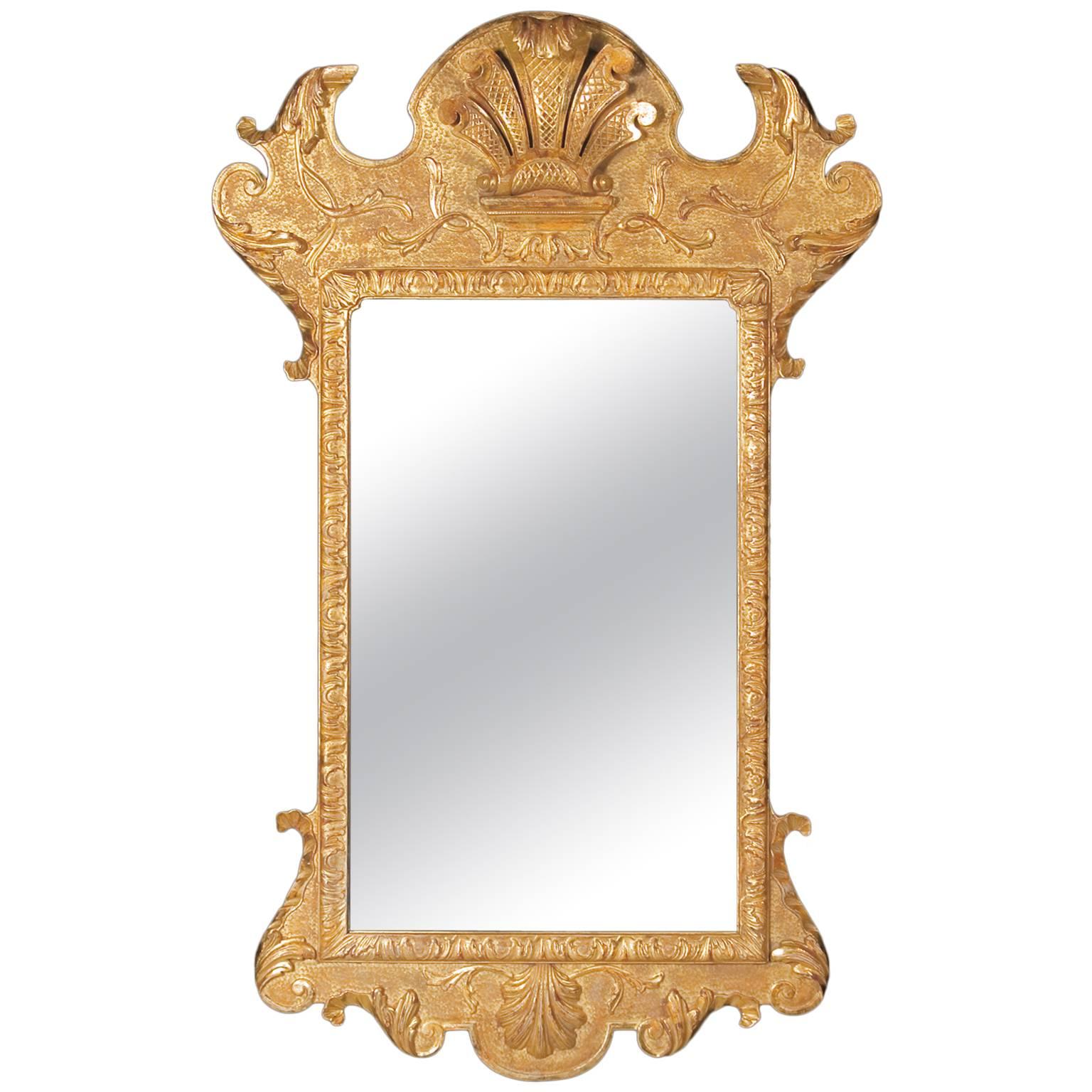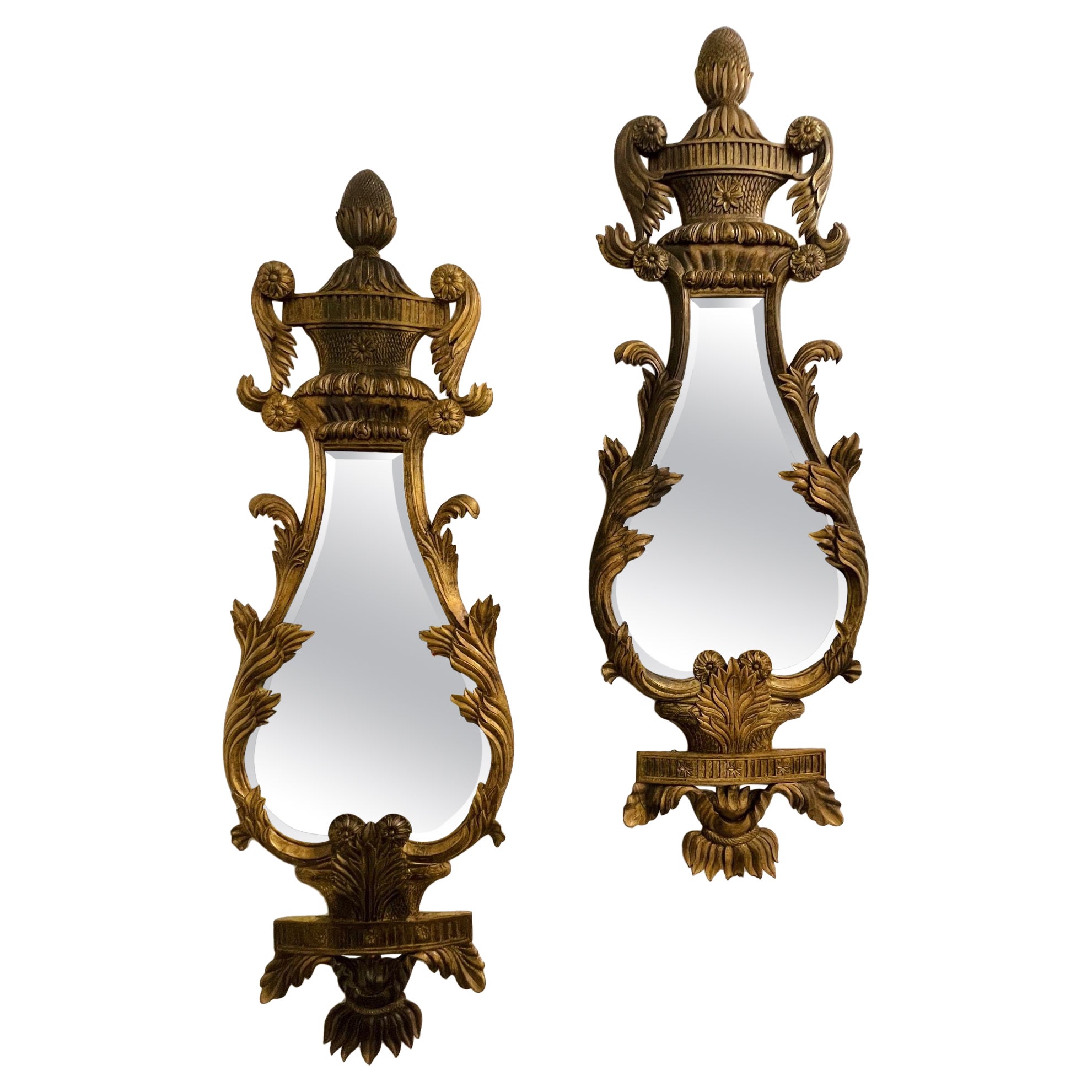Items Similar to Monumental Overmantel or Pier Mirror in the Aesthetic Taste
Want more images or videos?
Request additional images or videos from the seller
1 of 6
Monumental Overmantel or Pier Mirror in the Aesthetic Taste
About the Item
American, third quarter of the 19th century.
Pine, gessoed and gilded, with mirror plate.
Measures: 81 ½ in. high, 59 ½ in. wide.
Condition: Excellent. The gilding has been cleaned and very, very slightly inglided as necessary. The ball at the upper left was missing and has been replicated based upon the original one at the upper right.
- Dimensions:Height: 81.5 in (207.01 cm)Width: 59.5 in (151.13 cm)Depth: 2.15 in (5.47 cm)
- Style:Aesthetic Movement (Of the Period)
- Materials and Techniques:
- Place of Origin:
- Period:
- Date of Manufacture:Third Quarter of the 19th Century
- Condition:Refinished. Replacements made. Condition: Excellent. The gilding has been cleaned and very, very slightly inglided as necessary. The ball at the upper left was missing and has been replicated based upon the original one at the upper right.
- Seller Location:New York, NY
- Reference Number:
About the Seller
No Reviews Yet
Recognized Seller
These prestigious sellers are industry leaders and represent the highest echelon for item quality and design.
Established in 1952
1stDibs seller since 2010
Typical response time: 1 to 2 days
Associations
Art Dealers Association of America
- ShippingRetrieving quote...Ships From: New York, NY
- Return PolicyThis item cannot be returned.
More From This SellerView All
- Pier Mirror in the Neoclassical TasteLocated in New York, NYNew York, circa 1815-1820. Wood, gessoed and gilded, with mirror plate. 75 1/2 in. high, 44 1/8 in. wide (at the cornice), 8 1/2 in. deep (at the cornice). Condition: Some restorati...Category
Antique 19th Century American Neoclassical Pier Mirrors and Console Mirrors
MaterialsMirror, Wood
- Pier Mirror with Églomisé PanelsLocated in New York, NYPier mirror with Reverse Painted, or Eglomisé, Panels, about 1800 New York, New York Eastern white pine, gessoed and gilded, with compo ornament, glass, reverse painted and gilded,...Category
Antique Early 1800s American American Classical Pier Mirrors and Console...
MaterialsGlass, Wood
- Small Settee in the Neoclassical TasteLocated in New York, NYSmall Settee in the neoclassical taste Boston, Massachusetts (active 1804–17), about 1810 Mahogany (secondary woods: ash) Measures: 35 1/8 in. high, 59 3/4 in. long, 19 1/8 in. deep Although the diminutive scale of this settee places it in a unique category, the piece itself partakes of a vocabulary that is common in Boston furniture of the Late Federal period. Its sabre legs, for example, as seen straight on from the left and right ends, are closely related to the legs, as seen from the front, on a group of chairs of undisputed Boston origin, including a spectacular armchair with scrolled arms (see Stuart P. Feld, Boston in the Age of Neo-Classicism, 1810–1840, exhib. cat. [New York: Hirschl & Adler Galleries, 1999], p. 37 no. 6 illus. in color), as well as a number of side chairs, including a set made for Nathan Appleton (see Page Talbott, “Boston Empire Furniture, Part I,” The Magazine Antiques, CVII [May 1975], p. 887 fig. 12). In all, the legs are ornamented with two bold, somewhat flattened reeds set between corner beads, a pattern which is repeated here on the front and end seat rails as well. The superb quality of the piece is further demonstrated in the finely drawn profile of the arms, as well as the delicately bulbous surface of the fronts of the arms and legs. As in the best of the related chairs, the sabre legs end in delicately carved paw feet. The added refinement of the beautifully carved rosettes at both the fronts and backs of the arms suggests that the piece may have been designed to be used in the round. Stylistically harmonious with these pieces is also a group of larger sofas with frontally set sabre legs and scrolled arms (see Page Talbott, “Seating Furniture in Boston, 1810–1835,” The Magazine Antiques, CXXXIX [May 1991], p. 963 pl. 11) that represent an indigenously Boston form. Although none of the furniture in this group has been effectively attributed, they can certainly be related to various Boston card tables...Category
Antique Early 19th Century American Neoclassical Settees
MaterialsWood
- Card Table in the Rococo TasteBy Charles A. BaudoineLocated in New York, NYRECORDED: cf. Anna Tobin D’Ambrosio, ed., Masterpieces of American Furniture from the Munson-Williams-Proctor Institute (Syracuse University Press, Utica, New York, 1999), pp. 85, 86, 87 illus. the Munson-Williams-Proctor tables // cf. The Metropolitan Museum of Art, New York, 19th Century America–Furniture and Other Decorative Arts (1970), exhib. cat., [n.p.] no.133 This table is identical to a pair of card tables bearing the stenciled label of Charles A. Baudouine of 335 Broadway, New York, which were acquired by James and Helen Munson Williams of Utica, New York, in May 1852 for their home, Fountain Elms, which is where they remain today as part of the Munson-Williams-Proctor Art Institute collection. The Williams tables were billed as “1 Rosewood Multiform Table” at $160 for the pair, and they were indeed “multiform” in that they could be used separately and folded as a pair of console tables, opened as a pair of card tables, or joined together as a center table. The present table varies essentially in the fact that it does not include the mechanism that would have allowed it to be attached to another to form a center table. Of French descent, Baudouine was born in New York in 1808. He made his debut as a cabinetmaker in the New York directory of 1829/30, where he is listed at 508 Pearl Street. By 1839/40 he relocated to Broadway, where he remained in business at various addresses until about 1854. A sense of the scale of Baudouine’s operation is given by German immigrant cabinetmaker Ernest Hagen...Category
Antique Mid-19th Century North American Rococo Revival Card Tables and T...
MaterialsWood, Rosewood
- Fan-Carved Wood Mantel in the Federal TasteLocated in New York, NYNew York, Fan-carved mantel in the Federal taste, circa 1812 Pine Measures: 66 1/4 in. high, 90 3/8 in. wide, 13 1/4 in. deep Within the genre of carved rather than plasterwork mantels of the Federal Period, no example that has come to light is more perfectly designed or more carefully wrought than the present one, which is an amazing symphony of fans, urns, beads, and other Neo-Classical devices, all ultimately influenced by the plasterwork designs of the English architects Robert (1728–1792) and James (1732–1794) Adam. Of a type that proliferated in the area bounded by the northern New Jersey counties of Bergen and Passaic, the Hudson Valley, and western Long Island, the mantel is representative of work that flourished in the first couple of decades of the 19th century. While most of the woodwork of this style that has survived is found in interiors, various examples of exterior doors and other trim have been noted, but most examples have disappeared as a result, variously, of natural deterioration and purposeful demolition in anticipation of development. Although considerably larger in scale and more elaborate in ornament than a mantel that has been in the collection of the Brooklyn Museum since 1944 (acc. no. 44.55; photograph in Hirschl & Adler archives), the present mantel is so close in style and conception to that example that it likely originated in the same house. The Brooklyn mantel is documented as having been removed from a house built by Judge Isaac Terhune (1762–1837), an eminent lawyer and judge. The house was situated on King’s Highway, at the corner of Mansfield Place, at the edge of South Greenfield, a village in northern Gravesend, Brooklyn. A photograph of the house, taken by the German e´migre´ photographer, Eugene Armbruster (1865–1933), is in the collection of the New-York Historical Society. Terhune is ultimately descended from the Dutch-Huguenot e´migre´ Albert Albertson Terhunen, who died in Flatlands, Brooklyn, in 1685.The family eventually spread out through New Amsterdam, Long Island, and Bergen County, New Jersey. Terhune’s great-grandson, also Albert (1715–1806), left a sizable estate to his six surviving children, including his second child and second son, Isaac. Judge Terhune lived in the house until his death in 1837, at which time, according to an article in The New York Times for November 27, 1910, he, having died without issue, “left the White Frame Mansion with its exquisitely carved doorway, beautiful mantels, and other interior adornments to his brother John” (Part Six, p. 11). The article continues: After the latter’s death, the house and its estate of about 70 acres passed through several owners, eventually being purchased in 1853 by Benjamin G. Hitchings [1813–1893]. The house next passed to Benjamin’s son, Hector, who had been born in the house, and then lived there for 25 years. He sold it in 1910 in partial payment for a Manhattan apartment house. After thus having been sold to a real estate developer, the Hitchings property was subdivided into Hitchings Homestead. The house survived until about 1928, at which time it was razed and a Deco-style apartment house with the address 2301 Kings Highway was constructed on the site and occupied in 1935. By 1910, the fate of the house, in an area of Brooklyn that was being rapidly developed, was becoming obvious. The Times article reported: The house has been well kept up, but fearing lest the hand of time or vandals might deal harshly with some of its choice bits of carving, Mr. Hitchings removed a few years ago a few beautifully carved wood mantels...Category
Antique 1810s American Neoclassical Fireplaces and Mantels
MaterialsWood
- Plateau in the Restauration Taste with Grape and Leaf MotifsLocated in New York, NYFrench. Plateau in the Restauration taste with grape and leaf motifs, circa 1825. Ormolu and patinated bronze, with mirror plate and wood backing. Measures: 15 7/8 in. diameter, 3 11...Category
Antique 1820s French Neoclassical Platters and Serveware
MaterialsBronze
You May Also Like
- Greek Key Overmantel Mirrors in the Regency mannerBy Thomas HopeLocated in Sturminster Marshall, DorsetA pair of rectangular Greek key, egg and dart decorated classical Grand Tour inspired overmantel mirrors in an aged Gesso finish. We are currently working to a 30-36 week lead time.Category
21st Century and Contemporary English Regency Wall Mirrors
MaterialsWood, Gesso
- Pier Glass Mirror in the Chippendale mannerBy Thomas ChippendaleLocated in Sturminster Marshall, DorsetThis rectangular giltwood looking glass mirror is carved in a light and open Rococo style frame. The mirror plate is set within vigorously drawn C-scrolls, acanthus leaves, flowers a...Category
21st Century and Contemporary English Chippendale Pier Mirrors and Conso...
MaterialsGold Leaf
- Pier Glass Mirrors in the Queen Anne mannerLocated in Sturminster Marshall, DorsetThese giltwood looking glass mirrors form a design transition between the reign of Queen Anne and the Georgian period. The plain, double arched and moulded frames are enriched with s...Category
21st Century and Contemporary English Queen Anne Pier Mirrors and Consol...
MaterialsGiltwood, Wood
- Gilt Gesso Pier Mirror in the manner of George ILocated in Sturminster Marshall, DorsetA George I style carved giltwood and gesso looking glass mirror. The rectangular mirror plate is in a leaf and shell carved moulded frame beneath a shaped cresting centered by a pier...Category
21st Century and Contemporary English George I Pier Mirrors and Console ...
MaterialsGold Leaf
- Pair of Giltwood Mirrors, Wall, Console or Pier Mirrors, Italian, 1960sLocated in Stamford, CTA fine pair of Italian giltwood wall or console mirrors. The pair having a harp shape with pinapple carved pedimont and all around giltwood carvings with a clean beveled mirror c...Category
Late 20th Century Italian Louis XV Pier Mirrors and Console Mirrors
MaterialsMirror, Giltwood
- Circular Wall, Console or Pier Mirror, Italian, Gilt WoodLocated in Stamford, CTCircular wall, console or Pier mirror, Italian, gilt wood. The whole having a pierced gilt gold fame of circluar design with a center mirror. The fram...Category
Late 20th Century Hollywood Regency Wall Mirrors
MaterialsMirror, Giltwood
Recently Viewed
View AllMore Ways To Browse
Taste And The Antique
Mirrored Ball
Mirror Monumental
Monumental Mirror
Mirror Ball Furniture
Aesthetic Movement American Furniture
Pier One Furniture
Pier One
Gilded Mirror With Console
Antique Mirror Aesthetic
Antique Mirror Ball
Gilded Pier Mirror
Monumental Console
Gilt Overmantel
Gilt Overmantel Mirror
American Gilded Mirror
Monumental Gilt Mirror
Pier Mirror Base

